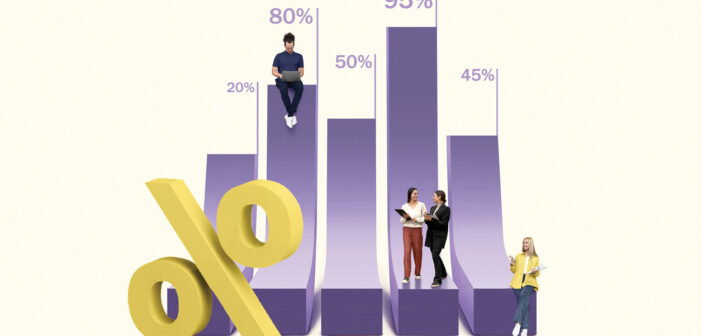The Federal Reserve has increased the federal funds rate from 0% to 5% to reduce the inflation they created during the pandemic. The federal funds rate is the interest rate set through monetary policy and is at a 16-year high. Members of the Open Market Committee, the committee that sets monetary policy, anticipate at least two more 0.25 percentage point rate increases. This would push this interest rate to 5.75%, a 23-year high.
The federal funds rate is the interest rate banks pay when they borrow and lend to each other. These are safe, short-term overnight loans. Other loans, such as mortgages, are riskier and longer-term. Thus, if the federal funds rate rises, all other interest rates rise as well, which is why the 30-year fixed mortgage rate is also at a 16-year high.
Much attention has been paid to the cost of high interest rates on housing. For instance, the 30-year mortgage rate increasing from 3% to 6.7% raises the monthly payment on a $250,000 house by approximately $600. This is why housing prices have decreased somewhat from their peak during the pandemic. Less attention is paid to the cost of high interest rates to the federal government from higher interest payments on the national debt and to the Federal Reserve in losses on its bond portfolio.
The national debt stands at over $32 trillion, a record high. Nearly $7 trillion of this comes due during the current fiscal year and the majority comes due over the next three years. The government issues new debt to pay this debt, and the new debt is issued at the higher interest rate. Consequently, interest payments on the national debt have ballooned to over $900 billion per year, which is larger than the entire U.S. defense budget. Interest payments on the debt now tie Social Security for the single largest expenditure in the federal budget.
The Federal Reserve expands the money supply by creating money to purchase government debt (e.g., bonds), which reduces interest rates. It restricts the money supply by selling these bonds, which increases interest rates. When interest rates rise, bond prices fall as bonds paying a lower interest rate are not worth as much as new bonds paying a higher rate. The Federal Reserve loaded-up its balance sheet by purchasing bonds paying record low interest rates during the pandemic and is now earning a loss selling them with interest rates having risen. The Federal Reserve is currently losing $60 billion with estimates that upwards of a half-trillion dollars in losses currently sit on the Federal Reserve’s balance sheet. It is not impossible to imagine that the Federal Reserve will require a bailout like banks did during the 2008-09 financial crisis due to their balance sheet losses.
At some point, the cost of high interest rates will be unaffordable to the Federal government and Federal Reserve. The question is whether this occurs before or after inflation returns to normal.














